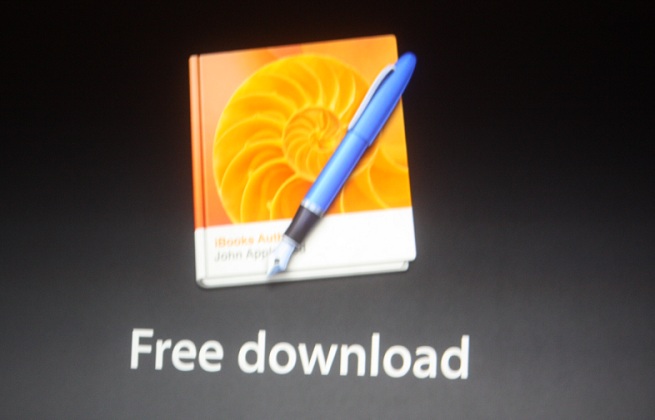Want smarter insights in your inbox? Sign up for our weekly newsletters to get only what matters to enterprise AI, data, and security leaders. Subscribe Now
Apple CEO Tim Cook re-emphasized the company’s interest in becoming the primary tool in the classroom today, with his announcement of a new version of its iBooks Author tool.
Apple’s October Surprise

We expected Apple to announce an iPad mini today, and we got it. What we didn’t expect was the sheer number of new products the company unveiled. Here’s a rundown of the news.
- Apple debuts new MacBook, iMac, IPad 4 and iPad Mini (live blog)
- Apple announces 7.9″ iPad Mini, measuring just 7.2mm thick
- Apple debuts full-size 4th-gen iPad with super-fast A6X chip & HD front camera
- Apple announces stunning 5mm-thick iMac
- Apple unveils gorgeous Retina 13-inch MacBook Pro, starts at $1,700
- Apple by the numbers: 200M devices running iOS 6, 125M docs in iCloud
The iBooks Author tool allows publishers to create interactive textbooks that make better use of the curriculum found in regular (boring) print textbooks. This new version adds tons of really useful stuff for educators, including lots of new publisher templates and the ability to include mathematical equations and interactive widgets. I’m assuming the widgets will use the Internet to keep certain pieces of information updated in real-time.
The other big change is that iBooks Authors now lets publishers update their textbooks with new or revised information. To get an upgrade of a regular textbook, you’d have to go out and buy a new edition of the same book.
Cook revealed that iBooks textbooks curriculum is available for 80 percent of high schools across the country, and over 2,500 schools are using iBooks textbooks in the classroom.
Apple first announced its plans to boost its role in the classroom via the iPad back in January. Not only did the company announce partnerships with many of the major textbook publishers, but it also released a new version of iBooks with interactive textbooks as well as the first version of its interactive textbook creator tool iBooks Author.
The education industry is something Steve Jobs always wanted to revolutionize. Not only because the potential for profit is high (the textbook industry is a $9 billion per year business), but it’s also currently really underdeveloped. Students are bored with traditional textbooks, probably because they don’t really apply to the modern world. The information contained inside those books, however, can be translated to a better platform that does.
And that platform could be the less expensive iPad Mini. The lower cost means forward-thinking school districts across the country might be able to justify supplying entire classrooms with iPads.
With the cost factor less of an obstacle, Apple won’t have to sell school districts on its commitment to education, as the company has historically shown that its products (e.g. Mac computers, past textbook sales) are an important teaching tool. Competitors like Amazon don’t have that kind of track record, which makes it much harder to justify the cost of supplying a school with Kindle Fire tablets.
Photo by Dean Takahashi/VentureBeat



